Reviews
Frederick Wiseman
USA, 1995
Credits
Review by Megan Weireter
Posted on 23 June 2008
Source Zipporah Films DVD
Categories Frederick Wiseman
When seen live on stage, there is something gloriously unnatural about ballet: the impossible points the feet make, the lithe arms perching above the almost mechanically precise spins of the legs. To move this gracefully would seem to require being something other than human. And so to shake up that way of thinking, Wiseman begins Ballet by watching dancers of the American Ballet Theatre loll and stretch all over the floors of their rehearsal space. At this point the focus is on the dancers as athletes more than artists, and it feels very intimate right from the start. You can see the meat on them, the musculature, and you can begin to imagine what they’re capable of even if they are still waking up.
Wiseman takes viewers through the creation of performances more or less chronologically, emphasizing the collaborative nature of ballet. The dancers rehearse for small crowds of balletmasters, choreographers, assistants, and other dancers. They stop, they take criticism, the masters push their bodies into place, and they do it again. Sometimes the dancers make suggestions, or quibble with what they’ve been told. During rehearsals, it’s never clear what ballet the dancers are working on or what the story is, so the movement appears abstract to viewers.
Amazingly, art is made entirely from these hours of practice and these threads of small human communication. It’s a polite and plodding ascent to the sublime. What the sublime should mean in any given rehearsal, though, is usually ambiguous. One of the few clues you hear about a choreographer’s artistic vision comes from an elderly woman working with a dancer from her wheelchair. “It must look absolutely broken,” she finally says with frustration. “A visible scream.” How do you achieve this in ballet? The dancer tries a different type of spin, which the elderly choreographer adjusts slightly, and then the balletmaster suggests the dancer hold her arms closer to her body and move them faster. These are just movements, of course, but incredibly, when she rehearses it again, you can see the scream beginning to take shape. This translation of pure movements that have no meaning by themselves into some kind of universally understood emotional language is at the heart of ballet, and the intricate process of making this art can’t help but captivate you.
In case it’s not already abundantly clear, I don’t actually know anything about ballet, which doesn’t matter one way or another as far as enjoying the film. But it does mean that I had no idea who any of these dancers or staff actually were, though several of them are apparently pretty famous. I didn’t realize until afterwards, talking to a friend who knows from ballet, that the elderly choreographer is Agnes DeMille. I still don’t know why one dancer named Susan autographs a ballet shoe for a little girl, except that she must be a principal. Wiseman doesn’t give away much about who these artists are personally, and while that’s not unusual for his films, it’s a little unusual for a film about the performing arts. But it speaks to his vision of the ballet as an entirely collaborative art, in which the individual peformers are less important than the larger thing they’re creating.
That’s what makes the more personal scenes near the end particularly poignant. The ABT goes on tour in Europe, and in surprising detours, the film follows the dancers as they hang out on the beach near Athens and at an amusement park in Copenhagen. After everything we’ve seen and all the work they’ve done, it’s striking to see the dancers being so normal, clustered around an amusement park map trying to find their way and then screaming and laughing as they ride the roller coaster. These scenes are interspersed with footage of performances, which is what the whole film has been building up to, and they underline again how amazing it is that art can come from these very ordinary human beings currently riding the tilt-o-whirl.
Finally, Wiseman shows the staged performances, which are all exciting after you’ve watched the rehearsal process so closely—you begin to see exactly why a room of people was stressing about a two-minute walking sequence in the context of the larger work. Short scenes from several ballets are shown, but the film closes with two long scenes from Romeo & Juliet. You know this story, so it’s easy to get swept up in the way the dancers are telling it, and the dancing is so intimate and natural that it mesmerizes you. But the lovers have to say goodbye: Romeo darts out through Juliet’s balcony, she runs helplessly to watch him from the window, and—the film ends abruptly, waking you from your dance-induced reverie without your even being allowed to see how the ballet ends. It’s as if the film has zoomed in on ballet only to zoom right back out again. Ballet has just deconstructed an art form, shown all the kinks, all the debate, all the hours of stretching and rehearsing and perfecting. But even when you can see all the seams showing, Wiseman defies you not to be moved by the art itself.
More Frederick Wiseman
-
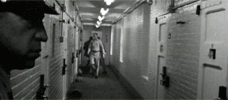
Titicut Follies
1967 -
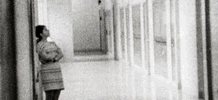
High School
1968 -

Law & Order
1969 -

Basic Training
1971 -
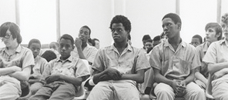
Juvenile Court
1972 -
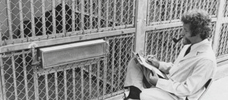
Primate
1974 -
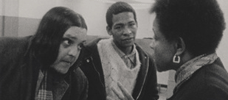
Welfare
1975 -
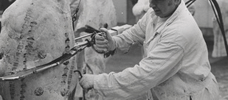
Meat
1976 -
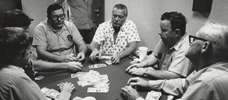
Sinai Field Mission
1978 -
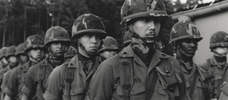
Manoeuvre
1979 -

Model
1980 -
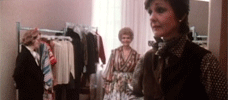
The Store
1983 -

Blind
USA -
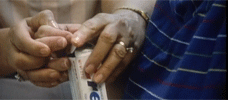
Adjustment & Work
1986 -

Missile
1987 -

Central Park
1989 -

Near Death
1989 -

Aspen
1991 -

Zoo
1993 -

High School II
1994 -
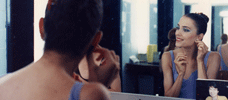
Ballet
1995 -
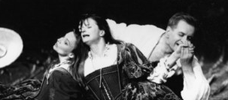
La Comédie-Française
1996 -
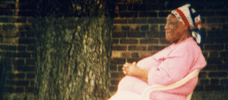
Public Housing
1997 -

Belfast, Maine
1999 -
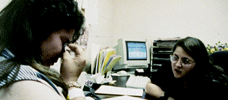
Domestic Violence / Domestic Violence 2
2001 / 2002 -
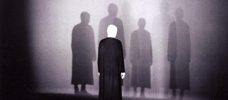
The Last Letter
2002 -

State Legislature
2006
We don’t do comments anymore, but you may contact us here or find us on Twitter or Facebook.



